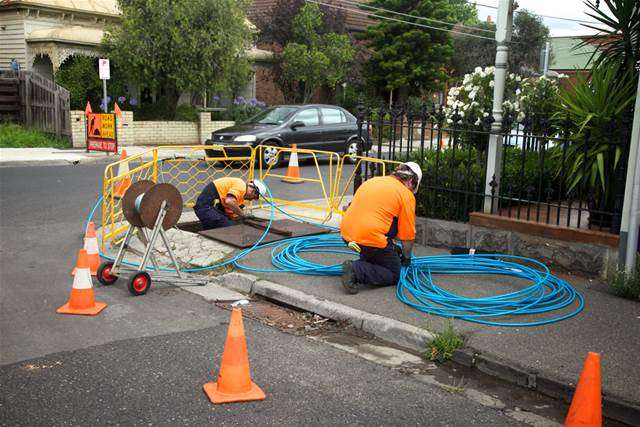The National Broadband Network is active in over one million homes and businesses and available to a further two million.
The network builder this week released its fiscal year results for 2015-16, which were fronted by the passing of two build milestones.
The number of premises with active NBN retail services fell just shy of 1.1 million by the end of June, which is more than double where it was a year ago.
In total, three million homes and businesses can now order a retail service if they so choose. Of the 1.9 million that haven’t, 70 percent are in “non-metro and regional Australia”.
“As we have confirmed throughout the year, the rollout of the NBN network is very much on track,” NBN chief Bill Morrow said.
“Today, nearly two thirds of the nation’s premises are currently in design, in construction or able to order an NBN service, and that is tangible progress.”
The Government was quick to latch onto the numbers, though Communications Minister Mitch Fifield faced questions on why more people aren’t taking up retail services, particularly those offered at higher speeds.
Fifield believed that part of the lag in take-up was because the benefits of an NBN connection had been undersold.
“People move to a system, network or service as it meets their needs,” Fifield said.
“We've spent too much time talking about the NBN rollout itself, and not enough about what NBN can actually do. The focus, for political reasons, has all been about the means rather than the end.
“People are discovering what the NBN can do.”
When people do decide to move onto the NBN, they are doing so on the lower-tier speeds of either 12/1 Mbps or 25/5 Mbps; over 80 percent of connections are on these speeds.
Fifield believed it was an indication of people “voting with their feet”.
“They're going for the product which meets their needs,” he said.
That message – that most people weren’t going with 50 Mbps or 100 Mbps plans, even if they could – was reinforced by the Minister for Regional Communications Senator Fiona Nash.
“The Sky Muster satellite supplies speeds of up to 25 Mbps and fixed wireless broadband up to 50 Mbps,” she said.
“For perspective, high definition Netflix requires only 5 Mbps - these connections really are fast. Over 80 percent of people are choosing the 25 Mbps plans or lower.”
By the end of June 2017, NBN said it hoped to have 2.3 million users active on its network, and a total pool of 5.4 million that could order a retail service if they wanted to.
“The NBN rollout has now built considerable momentum and we are quickly ticking off our milestone targets,” Morrow said.
“My management group and I are confident that the plan, industry partnership and talented team now assembled are able to continue to meet challenges as we head towards our 2020 goals.”
NBN now has over 5000 direct employees and an “extended workforce” of 11,000, taking into account its build contractors and subcontractor workforce.









